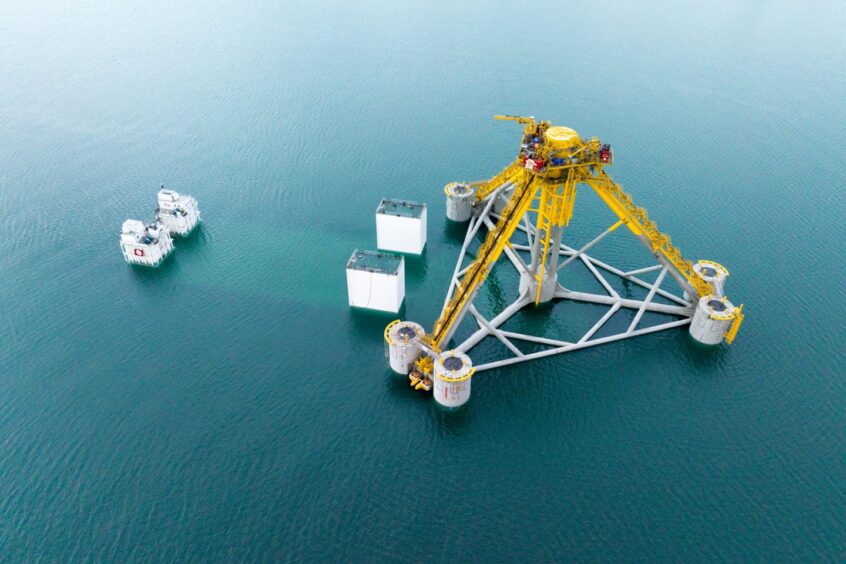
SBM Offshore and Technip Energies revealed plans to create a new floating wind focused joint venture, dubbed EkWiL.
The new 50/50 “pure player” in floating wind will draw on the expertise, engineering and technologies of both companies to deliver integrated floating solutions and delivery for the emerging market, they said in a joint statement.
Combining the pair’s experience will allow EkWiL to provide greater execution certainty and cost competitiveness, they added.
In particular EkWiL’s backers pointed to their respective technologies, in particular Technip’s semi-submersible INO15 foundation – a properitary “lean and scalable design” upon which turbines can be mounted – and SBM’s second-generation tension leg platform Float4Wind.
The two technologies would enable the new venture to cover “a large spectrum” of the potential floating wind market, and bring them to commercial deployment.
SBM CEO Bruno Chabas said: “Our aim is to become a recognized leading contractor in developing floating offshore wind infrastructures.
“Collaboration is fundamental to position our ambitions sustainably while managing the pace of infrastructure development and the challenging economics of these pioneering systems. We are pleased to share our experience with the right partner, broadening the range of solutions and reinforcing our energy transition commitment.”
Technip Energies CEO Arnaud Pieton added: “Joining forces and collaborating are necessary to capture the potential of the nascent floating offshore wind market.
“By leveraging the synergies of complementary technologies and supply chain experience, EkWiL will increase predictability to meet market demand and deliver on our ambition to provide new energy solutions.”
It follows a number of contractors who have joined forces to develop floating wind equipment, including BW Ideol which has plans for production facilities in Ardersier and at Port Talbot, to serve ScotWind and Celtic Sea projects respectively.
In 2022 Technip also unveiled a suite of offshore green hydrogen “building block” solutions dubbed GO.H2 aimed at linking fixed and floating assets with low-carbon fuel production facilities.
